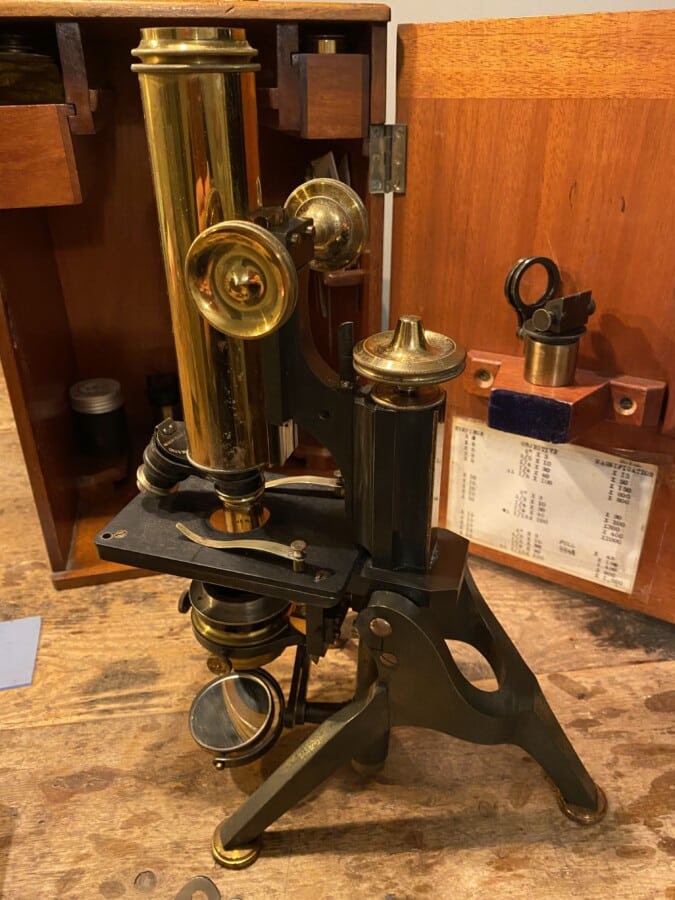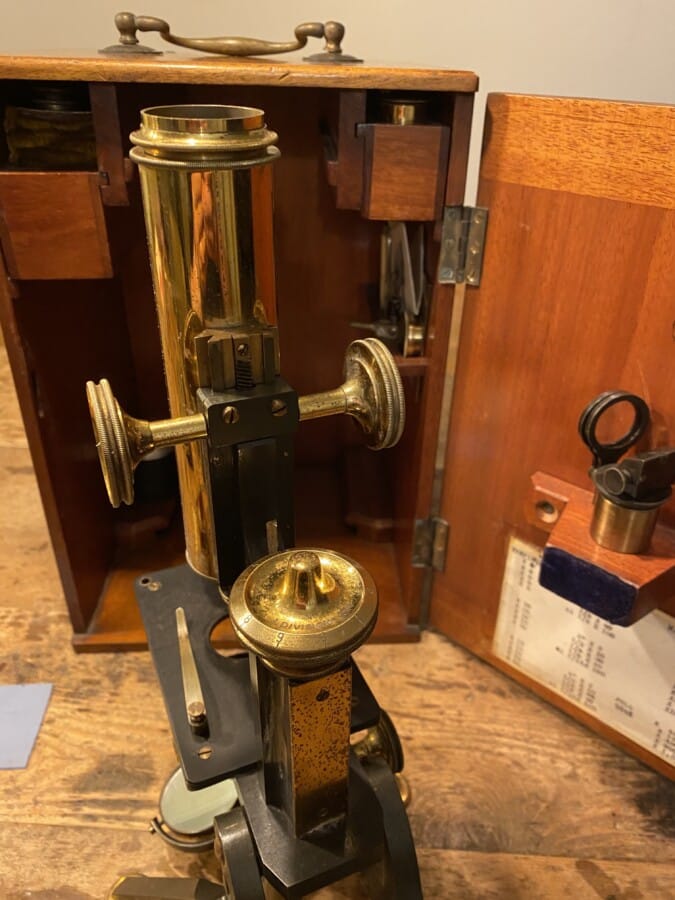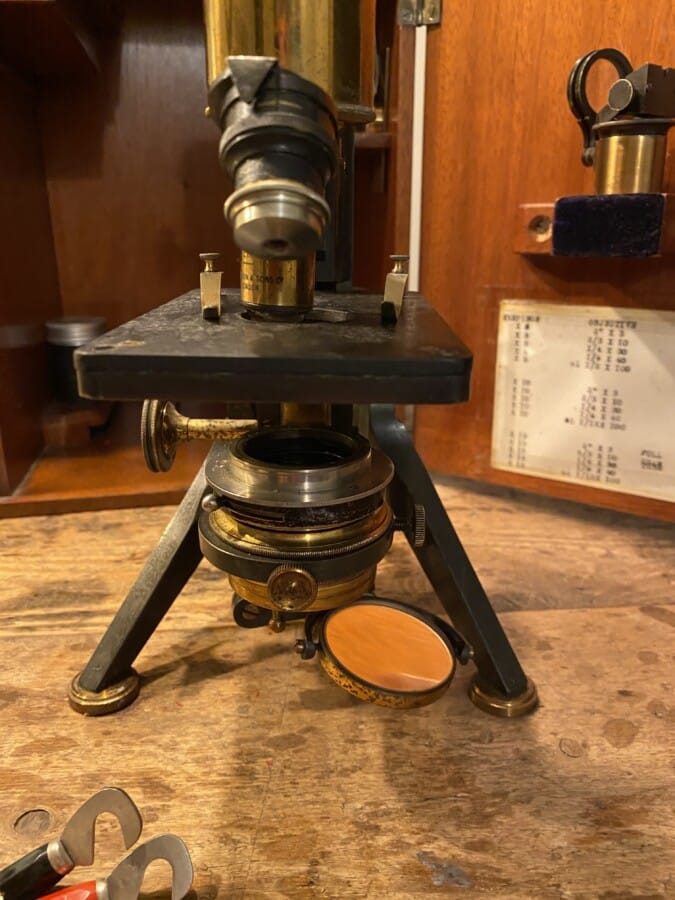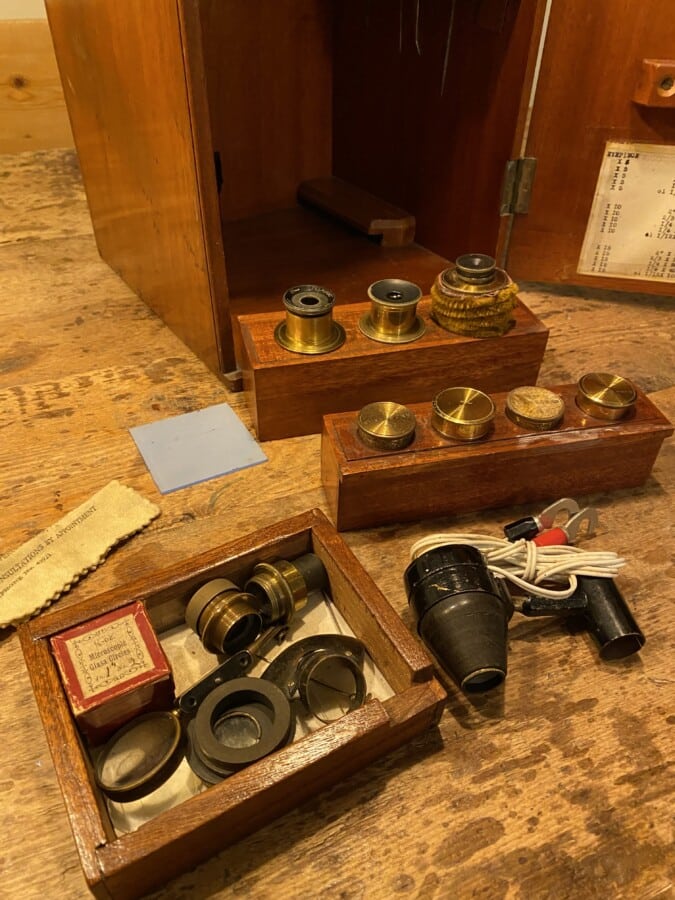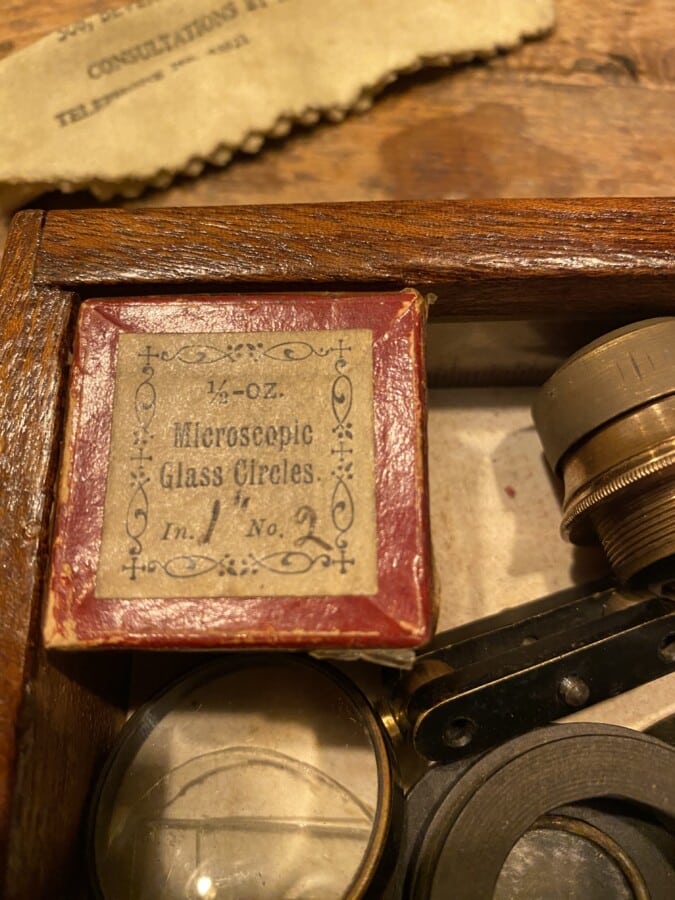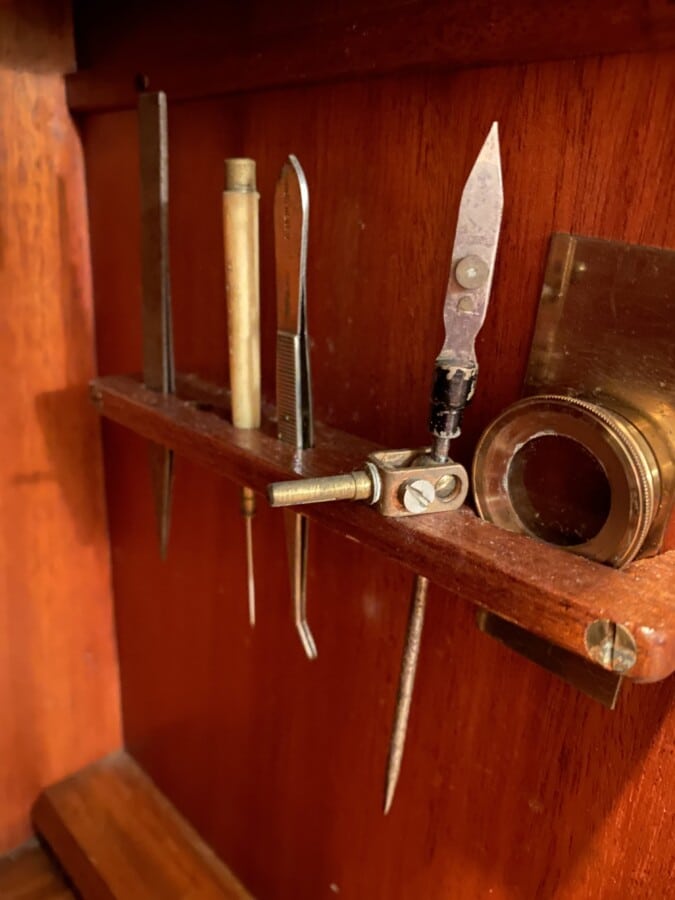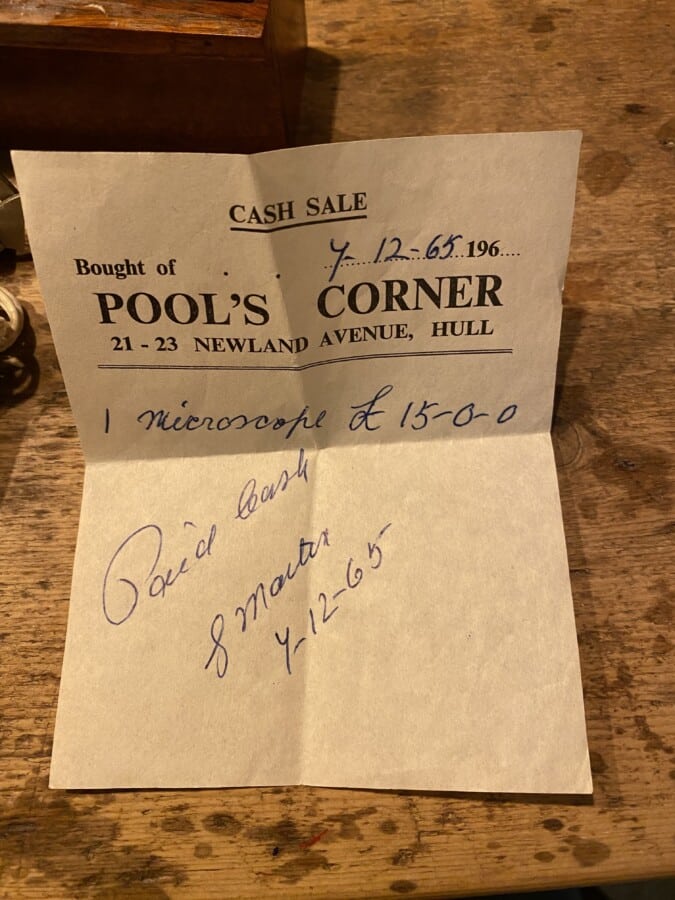Description
|
This listing is for a lovely original example of Watson’s Edinburgh Stand-H model monocular microscope in brass – it dates to around early 1900’s. The brass-work really is in excellent condition for its age with hardly any spotting or tarnishing that I can see and it’s probably the best lacquer I’ve seen on a Watson from the Edwardian period. This is exactly what you’d hope for with an original condition antique example from this period and it’s obviously been really well looked after during its 100 +year history. The anodised brass tripod and frame is also showing no real signs of age, that I can find and it has just the right patina and time-worn look. The brass tripod feet are all present and correct – in this period Watson used separate brass feet attached from underneath with small brass bolts.
The Edinburgh model range was produced by Watson between 1887 and around 1945; its long production run giving us a firm clue regarding just how good this model of microscope was in its heyday and it was in fact so well regarded it was chosen as the preferred microscope for the Royal Navy. The Edinburgh stand was originally developed by Watson in collaboration with a professor and lecturer in bacteriology at the University of Edinburgh, hence the Edinburgh designation. With its signature rear cross-member giving that classic “H” look and nice shiny brass-work, Watson’s Edinburgh model is a fine example of British optical engineering with a design and style essentially dating back to the Victorian era. Turning to the technical details, the coarse focus is via rack and pinion with the main tube holding in position well. For fine focus, this is achieved via a separate brass thumb-wheel located at the rear of the upper frame which operates an internal lever system against sprung resistance. The focusing technique being to achieve near focus with the coarse thumb-wheels, then fine-tune with the single rear thumb-wheel, which has a fairly small range of movement via its vernier screw mechanism. The instrument tilts for inclined viewing and holds in position as it should on inclination and can be tightened further if required.
With the optics, this Watson microscope comes fitted with a period graduated brass eyepiece draw-tube inside a brass main optical tube and there’s two quality vintage eyepieces that with adequate illumination produce good images:
– 2/3rds inch Watson – 10x magnification – 1/6th inch Watson – 40x magnification – 1/12th inch Watson – 100x magnification – oil immersion
(all the objectives have their correct brass canisters)
The fully mechanical stage is an original Watson item in brass with twin thumb-wheel adjusters on the right hand side of the stage, currently fitted with a pair specimen clips for holding slides steady during inclined viewing and when the axes are being moved. The x/y controls also offering fine control of specimen positioning, which is a real advantage for higher magnification work. The x and y-axis thumb-wheel action feels about right to the touch with just the right amount of resistance and it’s a bonus to see that the x-axis adjuster looks to be nice and straight.
Turning to the sub-stage, we have a Watson condenser with centering controls comprising twin brass thumb-screws, which sits in a height adjustable rack and pinion mount with single-sided brass thumb-wheel to adjust the height along with a swing-out feature allowing easy swapping or maintenance of the condenser hardware. The condenser assembly also has a working iris to control lighting levels and there’s a 35mm swing-out carrier fitted for adding coloured, opaque of dark-field filters. Lighting is via a plano-concave mirror on a height and swing adjustable brass support arm and gimbal, with period silvering that’s in perfect condition both sides. Original electrical bulb also included.
All the instrument’s controls have been lightly lubricated and operate with age-appropriate signs of wear including coarse focus, fine-focus, eyepiece draw-tube, mechanical stage, condenser rack and plano-concave mirror. This instrument presents really well with lovely brass-work that really catches the light well giving a nice deep golden glow. Overall, it’s in excellent shape for its age with just the right patina for a well-preserved example from this period. This instrument is essentially a collectible Watson Edinburgh Stand-H model and it’ll make a rather nice usable display item. It will display rather fittingly in a library or home office setting.
There’s also a Watson storage case with this example, which is also in pretty good condition for its age and again is original to the instrument, it fits the internal lens rack and also a lock with original key.
Owing to the weight and delicacy of this Edinburgh-H microscope, it will be partially dismantled, very well wrapped for shipping and dispatched by insured courier upon receipt of cleared funds. Overseas buyers please use the eBay Global Shipping option if available for your territory, or contact seller for alternative shipping options and costs.
Thanks for looking – please also check out my other listings if you get the chance.
Original hand written receipt from 1965 when last purchased for £15 |

